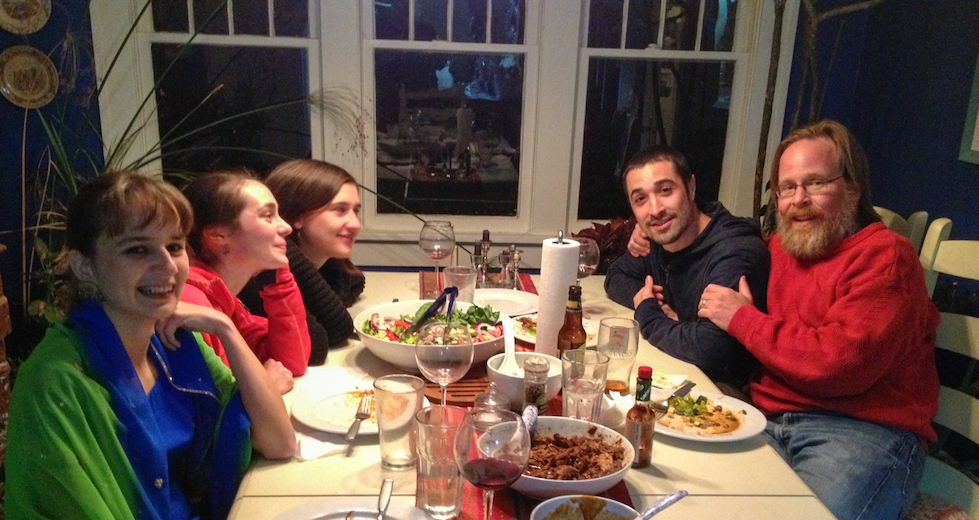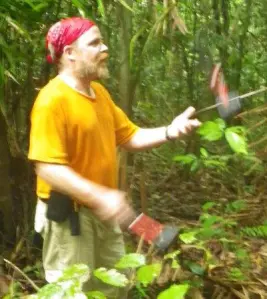Folks in our lab know their organisms, know their theory, and combine field and lab studies to answer questions that obsess us. We work all over the world, but have a real fondness for tropical rainforests and grasslands. We have a helluva lot of fun doing what we do.
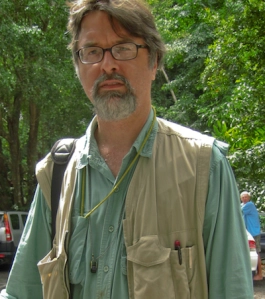 PI: Mike Kaspari
PI: Mike Kaspari
Mike grew up in Lincoln Nebraska, where he earned his undergraduate and master’s degree studying with Tony Joern at the University of Nebraska, and his Ph. D. with Michael Rosenzweig at the University of Arizona. After post docs in at UT Austin, U. Guelph, and the Lawrence Livermore Lab, he joined the University of Oklahoma. His early interests in the behavioral ecology of grassland birds gave way to myrmecology when he visited the tropics in 1988, and to geographical, or macroecology of brown food webs as he traveled the New World studying ants. In his spare time Mike likes to spend time in the kitchen and garden, play guitar (with a particular fondness for the Beatles) and absorb books and magazines. CV Google Scholar

Grad Student: Miranda Theriot
Miranda is a PhD student in Dr. Hayley Lanier’s lab. Her research interests include organismal responses to climate change, with a particular emphasis on how rapid environmental shifts drive temporal and spatial trends in animal body sizes. Beginning spring 2021, she also serves a graduate research assistant in the Pitfall Arthropod Imaging Lab, collecting data for a project on patterns of activity density and body sizes in North American terrestrial invertebrates.
Alumni
Dr. Ellen Welti
Dr. Ellen Welti is currently a post doc at the Seckenberg Research Institute. She led the “Great field season of 2017” where we surveyed 54 North American grasslands exploring how nutrient availability, particularly sodium, ramified from soil to plants to invertebrates. Her 2020 PNAS paper linking declines in grasshoppers at Konza Prairie is a classic, highlighting the likely role of Nutrient Dilution in insect declines. Google Scholar
Dr. Michael Weiser
Michael D. Weiser is a native of St. Joseph, Missouri. He did undergraduate work at the University of Kansas, where he studied the population genetics of harvester ants and the University of Oklahoma, where he studied ant community ecology. His MS research focused on ant ecological morphology. He earned his Ph. D. at the University of Arizona focusing on the biogeographic-scale patterns of diversity of plants and mammals and postdoctoral work at North Carolina State on ant biogeography. Mike returned to Oklahoma to help coordinate the MacroSystems project. He is a devoted father, has an understated sense of humor, and is an excellent cook and guitar player. Google Scholar

Dr. Karl Roeder
Dr. Karl Roeder is a Research Scientist at the USDA-ARS. Karl earned his Ph. D. in the lab and his speciality was clever, adaptive field experiments which often yielded unexpected results. One of my favorite papers of Karl’s revealed that a population of imported fire ants in a scrubby patch of old field occupied three trophic positions, essentially playing the role of a relatively diverse ant community.Google Scholar
Dr. Rebecca Prather
Dr. Rebecca Prather, now a post doc at Florida State University, earned her Ph. D. in the lab. Her dissertation work was replete with large-scale field experiments, beautifully executed in Oklahoma grasslands. Yet the manuscript that may be most cited from her work here was a meta-analysis that she organized, revealing the pivotal role of micronutrients in catalyzing the positive effects of N and P on grassland invertebrates. Google Scholar
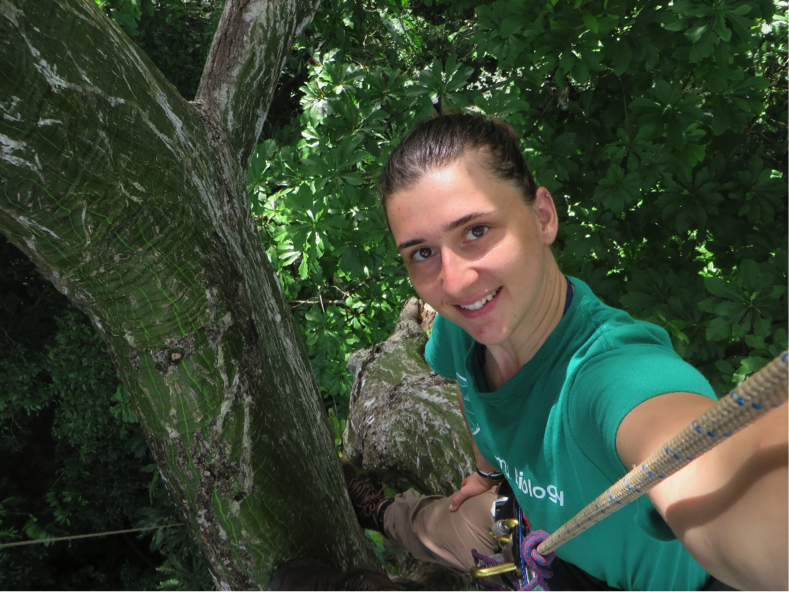
Dr. Jelena Bujan
Dr. Jelena Bujan is a post doc at the University of Lausanne in Switzerland. Jelena earned her Ph. D. in the lab, where her speciality was tropical myrmecology, exploring how the abiotic template shaped community structure. Her physiological studies of temperature tolerance and desiccation resistance are some of her most important work.. Google Scholar

Dr. Jane Lucas
Dr. Jane Lucas is on the faculty of the Cary Institute. Jane earned her Ph. D. in the lab exploring the ecological of microbiomes and antibiotics in the tropical rainforest. One of my favorite projects of Jane’s, explored the way decomposing microbes use antibiotics to chase off invertebrate detritivores, and that some detritivores, like millipedes with their own homegrown microbiomes, are not so easily intimidated. Google Scholar
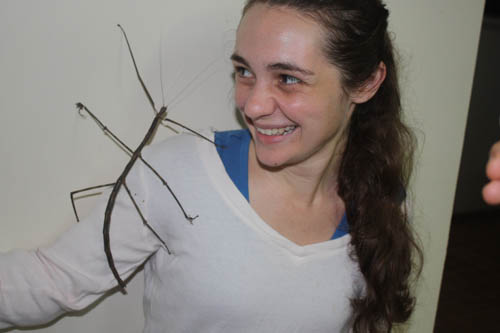
Dr.Natalie Clay
Dr. Natalie Clay is an associate professor at Lousiana Tech University. She earned her Ph. D. in the lab exploring the nature of sodium limitation in brown food webs. One of her best papers, for which she earned the Elton award from the British Ecological Society, explored used a comparative geographic study to explore the nature of omnivory. Google Scholar
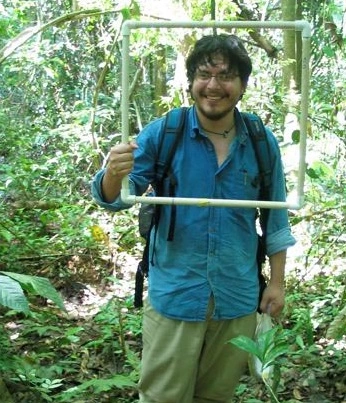
Dr.David Donoso
Dr. David Donoso is a professor at the Escuela Politécnica Nacional, and a member of the Ecuador National Academy of Science. He earned his Ph. D. in the lab studying the factors regulating species diversity of ants and other members of the brown food web on Panama’s Barro Colorado Island. My favorite paper of David’s during his time in my lab explored the role of trees as templates for the structure of litter communities.
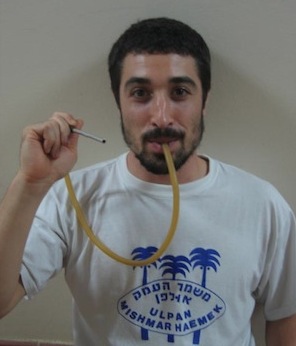
Dr. Jonathan Shik
Dr. Jon Shik is an assistant professor at the University of Copenhagen. He earned a Ph. D. in my lab and his dissertation began with the community ecology of litter ants then delved into comparative studies of their metabolic ecology and life history. One of my favorites from the earlier ouvre explored how nutrient availability on the forest floor can feed both the ants and the microbes that degrade their habitat.
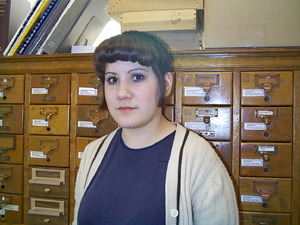
Dr. Mary Johnston
Dr. Mary Johnston earned a Masters of Science in my lab before taking a dissertation at University of Texas Austin. Her thesis work focused on the community ecology of carabids along elevational gradients.
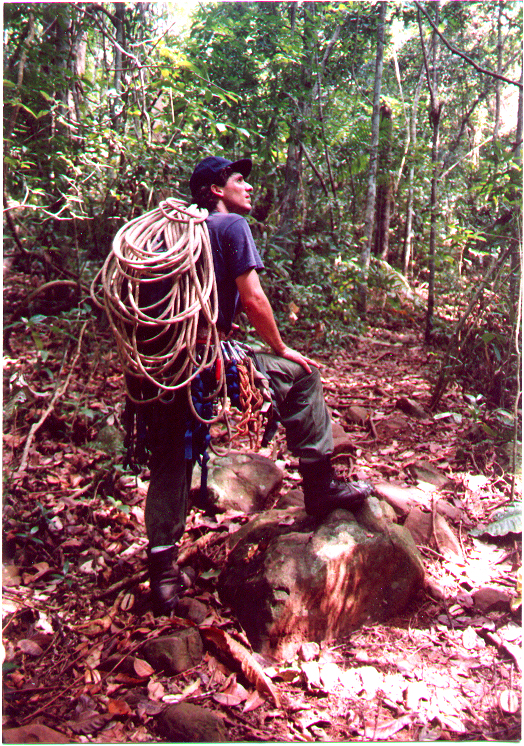
Dr. Steve Yanoviak
Dr. Steve Yanoviak is professor of Biology at the University of Louisville. His post doc with me on the comparative ecology of canopy and litter ants was some of the first of its kind, and while climbing Steve made one of those great discoveries: that a variety of ants, dislodged from a branch (or jumping) can implement a controlled glide back to the trunk.

Dr. Leeanne Alonso
Dr. Leeanne Alonso is a conservation biologist with Global Wildlife Conservation. In a long career Leeanne has been instrumental in aiding conservation organizations in the mapping of Earth’s biodiversity.
 The Kaspari Lab
The Kaspari Lab